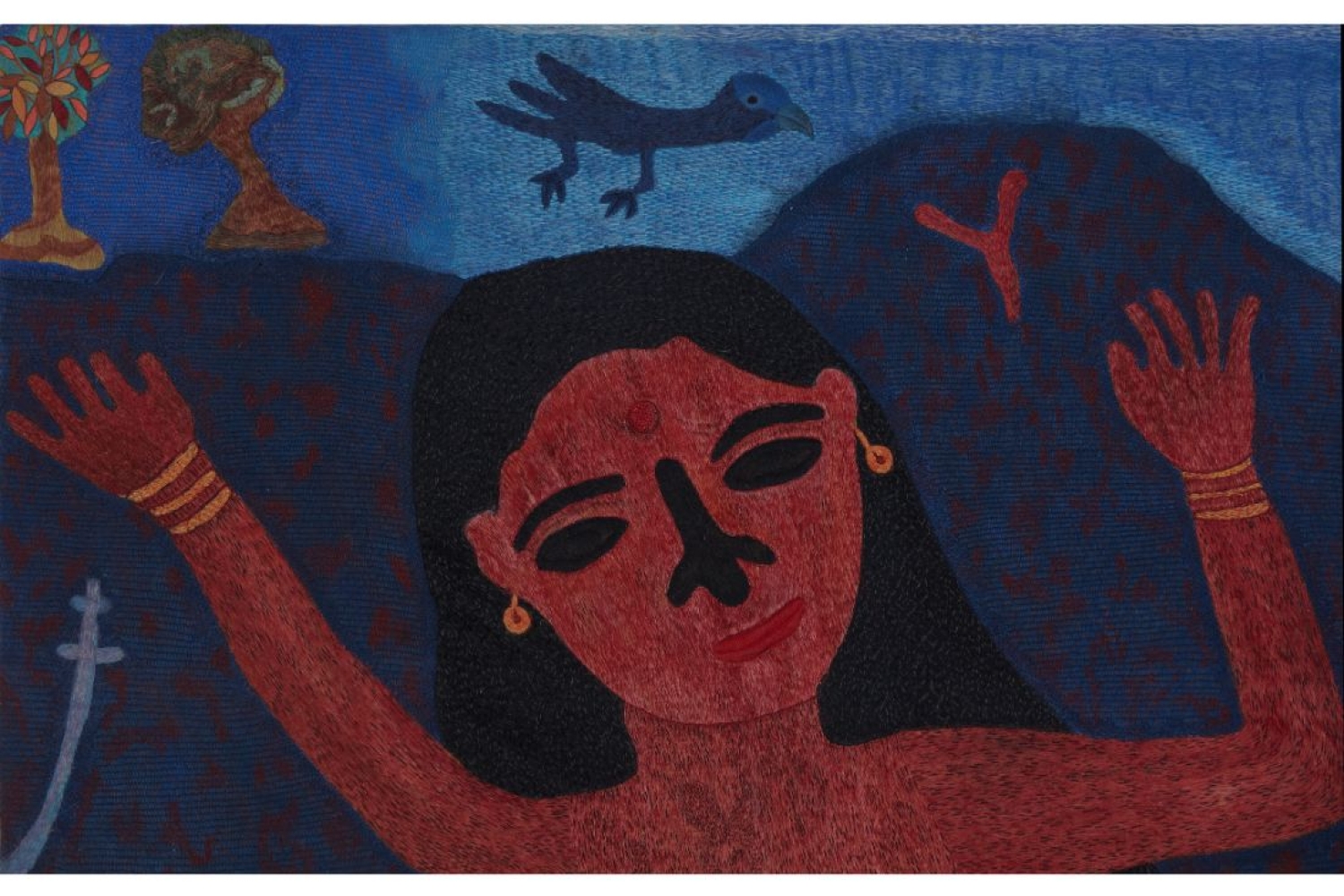

Karishma Swali, Creative Director of Chanakya International and Chankya School of Art was born into a family of art lovers and connoisseurs. In the early eighties, when her father founded Chanakya, his vision was to showcase India’s finest craftsmanship to the world.
At age 11, Karishma accompanied him to the Chanakya atelier where she watched in awe as the artisans, with their quiet disposition, worked in unison to create something exquisite. Years later, she found herself back in the same atelier as an apprentice under her father’s guidance. ‘It was then that I realised craft is not just a skill; it is an expression of the human spirit in material form. The craftspeople are artists who use the medium of craft to express themselves and their collective identity. In my 25-year journey exploring craft, I have had the pleasure of working with artists, conservationists and advocates to highlight India’s diverse traditions through craft excellence. And the school is certainly the most humbling aspect of my professional career,’ says Karishma. Established in 2016, Chanakya School of Craft is a non-profit school and foundation dedicated to craft, culture and creating new autonomy for women. ‘Our aim was to create a nurturing environment where women from diverse backgrounds could harness their creativity and skills to address pressing socio-economic and environmental challenges. Inspired by Rabindranath Tagore’s holistic philosophies, our school promotes experiential learning and active engagement with cultural heritage. Our mission is to foster an inclusive, empowering, and knowledge-driven environment for women, equipping them with the skills needed to thrive independently in the world.’ The school has taught over 1000 women to date, across all ages and socio-economic backgrounds, forming a strong community of skilled, autonomous women.
This month Karishma along with Chanakya School of Art is having their first-ever showcase at the prestigious 60th International Art Exhibition—La Biennale di Venezia. The exhibition Cosmic Garden honours the pluralistic beauty of India’s cultural heritage features paintings and sculptures by Madhvi and Manu Parekh, and the evolution of their practice into a third interdisciplinary medium — hand-embroidery — presented through crafted works and sculptures. Karishma explains the inspiration behind it below.
Could you share with us the inspiration behind the Cosmic Garden exhibition and how it evolved into a collaboration between yourself, Madhvi Parekh, Manu Parekh, and the Chanakya School of Craft?
The seeds of this collaboration were sown many years ago when I began collecting the works of Manu Parekh and Madhvi Parekh. What followed was a series of conversations centred on our mutual passion for craft and the rich artisanal legacies of our country. It’s fascinating to witness these works harmonise, particularly Madhvi Parekh’s paintings, which often embody the female energy of Indian goddesses. Many of the artisans, hailing from Calcutta, have grown up immersed in the traditions of Durga and Kali, making it a profound experience for them to recreate this energy using threads.
Titled after Manu Parekh’s work, Gate of Cosmic Garden, the exhibition is a Collateral Event of the 60th La Biennale di Venezia, celebrating India’s rich cultural heritage through a contemporary lens. It features paintings and sculptures by Madhvi Parekh and Manu Parekh and an exploration of a new interdisciplinary medium: hand embroidery. This evolution is presented through crafted works and sculptures created by the artisans of the Chanakya School of Craft.
The exhibition aims to re-evaluate the relationship between women and embroidery, bringing it into the public sphere. How do you see this re-evaluation impacting both the perception of embroidery as an art form and the role of women in the artistic process?
Traditionally, handcraft skills in India are passed from father to son. However, our school is unique in that it not only teaches the art of hand embroidery but also exposes our female students to various facets of culture and design. This revaluation of the relationship between women and embroidery marks a significant shift in how we perceive this timeless craft. By actively showcasing embroidery in global exhibitions like the Cosmic Garden, we question assumed hierarchies while challenging entrenched gender norms in the artistic process. Viewed through this lens, embroidery emerges as a potent tool for enabling self-expression and autonomy among women artisans, empowering them to reclaim their rightful place in the artistic narrative.
Madhvi Parekh’s paintings often depict celestial beings and symbolic representations inspired by Indian mythology. How did you approach translating her narrative-driven artworks into hand-embroidered pieces?
Translating Madhvi Parekh’s narrative-driven artworks into hand-embroidered pieces was very spontaneous and collaborative, which came from a profound admiration for her unique style and thematic explorations. To interpret her work, a primitivist expression was adopted, using dimensional techniques in repetition to create background textures that evoke a magical world of folktales and pastoral scenes populated by village deities, forests, animals, children, and amorphous forms. Additionally, techniques such as couching and fine-needle zardozi stitches were used to achieve a sfumato effect, allowing tones and colours to blend gradually, creating softened outlines and hazy forms.
Each hand-embroidered piece was crafted with precision, featuring over 14 layers of embroidery. This intricate layering technique enabled us to achieve a richness and complexity reminiscent of Madhvi’s paint- ings, ensuring that every stitch contributed to the overall narrative and visual impact of the artwork.
This is an exclusive excerpt from our April EZ. To read the entire article and more such pieces, follow the link here.
Words Hansika Lohani
Date 16.04.2024